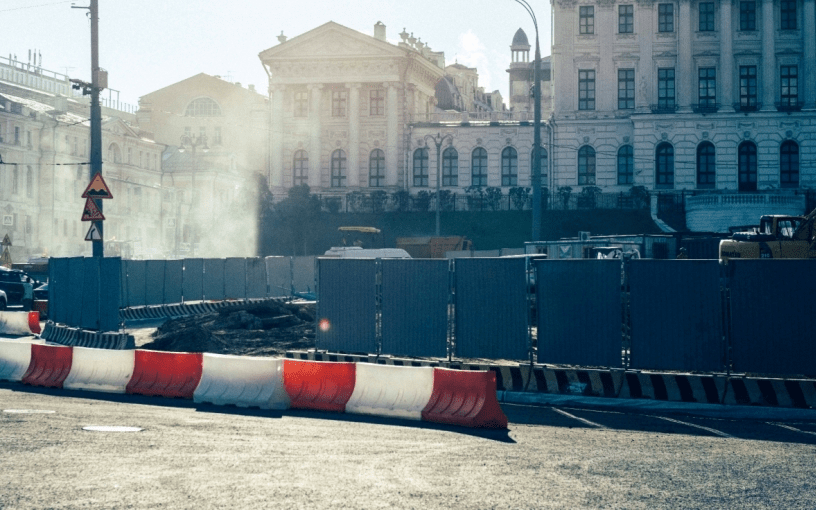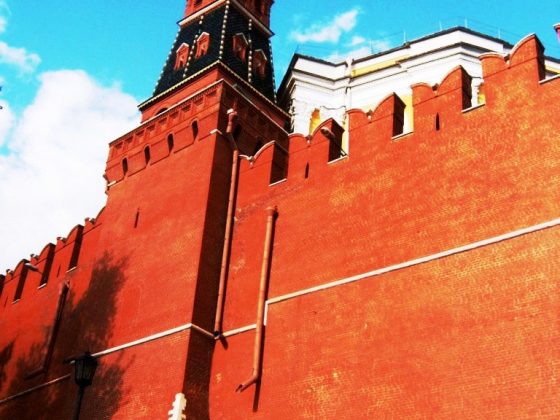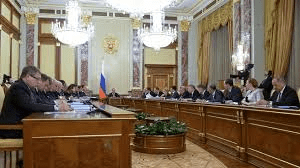(PONARS Eurasia Policy Memo) Tahrir, Maidan, and Bolotnaya plazas—the public spaces associated with pro-democratic protests of the last decade—are located in the capital cities. Controlling public opinion in the capital city is undoubtedly a crucial challenge for all autocrats. This policy memo brings attention to the diverse mechanisms of control that modern authoritarian rulers have at their disposal for manufacturing consent using digital technologies. As we show, they can leverage even such mundane issues as road potholes to demonstrate responsiveness and government capacity. Moscow authorities invest massive resources into city infrastructure and transport systems and use crowdsourced information about quality to demonstrate effective government performance. This allows them to win votes during elections by delivering public goods with high public visibility.
Digital Authoritarianism
One strand in the growing literature on “digital authoritarianism” brings attention to how autocrats use new media and digital technologies for surveillance, monitoring, and manipulation. The menu of manipulation can involve, among other things, reliance on e-government to simulate public service provision. Government-supported websites in some Central Asian states, for example, do not provide any significant service to the country’s population but serve more a symbolic function—signaling to international audiences–or to more educated domestic groups–that governance in these states is up to date.
Nonetheless, some authoritarian states come to top international rankings that include high-income democratic states in terms of well-developed online services that actually help people in their daily lives and interactions with the government at various levels. According to a 2018 UN cross-national study, the Russian Federation, Belarus, and Kazakhstan, for example, joined the group of high-performers in e-government. We know that these authoritarian states rely on a variety of methods for controlling public opinion. Russia, in particular, has invested massive resources into developing technologically advanced propaganda tools to maintain the political status quo. Does the development of digital governance technologies in these states also serve as a propagandistic tool?
Some recent studies have shown that autocrats’ legitimation strategy can rest on fulfilling “people’s will and material needs” as opposed to merely manipulative strategies of public opinion control. Information and communication technologies (ICT) can enhance actual government performance and service delivery, and such improvement could be an important element of authoritarian legitimation in the context of rapidly growing internet availability. Authoritarian rulers devise methods to receive information on citizens’ preferences and act on some of them. Therefore, it is important to explore the conditions under which authoritarian leaders find it necessary to enhance their performance levels. In the context of China, scholars have demonstrated that threats of collective action may lead authoritarian governments to increase responsiveness levels. It is plausible to suggest that such threats might be consequential in other authoritarian states as well.
Online Applications for Citizen Complaints in Moscow
The political opposition in Russia was behind the initial attempt to increase local government responsiveness in relation to road quality in Moscow. The first online application to report potholes in Moscow—“RosYama” (rosyama.ru)—was introduced in 2010 by Alexei Navalny’s Foundation Against Corruption (FBK). This application was initiated along with other civic initiatives by the FBK such as “rosZhKH” (roszhkh.ru), an online portal for reporting housing issues such as leaks, problems in stairwells, elevators, etc.).
These projects sought to empower citizens by making the process of complaining easier and more effective because the development of these applications involved legal support and integrated the knowledge of specific rules and regulations about the services expected from the government. As such, these portals represented the opposition’s attempt to use ICT for the purpose of ensuring government accountability and responsiveness through monitoring and crowdsourcing. The spread and usage of such applications were especially noticeable in Russia’s two largest cities, Moscow and St. Petersburg, and coincided with political protests in Moscow during 2011-2012.
The opposition’s reliance on digital technologies coincided with big changes in Moscow government and governance under the leadership of Moscow’s new mayor, Sergei Sobyanin. Succeeding Yury Luzhkov in 2010, he initiated an ambitious urban development policy, declaring the goal of bringing Moscow to the top tier of global cities in terms of comfortable and modern living conditions. Some observers viewed this as a new political strategy for the Moscow mayor to win the support of “angry urbanites” who flocked to the streets in 2011-2012. The major redevelopment plans were also accompanied by a new system of feedback from city residents—“Active Citizen”—an electronic voting platform deploying blockchain technology to ensure transparency and non-interference with the results. While promoted by some as an example of “blockchain democracy,” this system was critiqued as an example of a technology that promotes a false sense of empowerment.
Sobyanin also invested in a new online portal, “Moscow–Our City” (gorod.mos.ru), which aimed at getting feedback on infrastructural issues in the city, including roads, housing, courtyards, as well as other city-related concerns. Currently, the site reports over 1.5 million portal users and indicates that over 3.9 million complaints have been resolved since 2011. An application to report potholes in the city was introduced in 2012 and merged with the site “gorod.mos.ru” later in 2013. It has since become the largest aggregator of complaints about potholes along with gripes about other spheres of life in Moscow, such as public transportation, various municipal services, illegal businesses, abandoned vehicles, street advertisement issues, and the like. The digital crowdsourcing of road-related issues was only a small element of the new transport policy in Moscow. Sobyanin invested heavily in building new road networks and reconstructing highways. Massive investments in the renovation of sidewalks with expensive brickwork also started early on under his leadership, but the program immediately raised suspicions of corruption.
The Politics of Pothole Complaints
The issue of road quality and transportation is of high salience to the residents of Moscow, a city of over 12 million people and around 3.6 million cars daily on its roads, according to the report “Moscow is changing for you.” Car ownership levels have sprung up over the last two decades, increasing traffic congestion and road usage, positioning transportation problems as a central concern for city commuters when Sobyanin was appointed mayor in 2010. The data from the two road-related platforms reveals that Muscovites actively use this service. The “RosYama” portal accumulated over 7,000 complaints about Moscow during 2011-2019 (the site works across the entirety of Russia). The highest number of complaints on RosYama was in 2012-2013, and then the portal lost its relevance in Moscow starting from 2014.
The mayor’s portal for potholes has been in operation since 2012. It quickly came to dominate as a favored tool for pothole complaints. Already in 2013, almost 10,000 complaints were filed through it. As of 2019, this portal had registered about 200,000 pothole complaints. Complaints peak every year around April-May, with potholes being formed as a result of the destructive impact of temperature switches in February-March, as the city emerges from its cold winter months.
The process of complaining is made easy. The application enables drivers or residents to locate a problem precisely on a map and submit a user photograph. A text message is then generated and forwarded to a control center where portal moderators forward it to the city authority responsible for that specific road. In most cases, the complaint would engage one of the three levels of city governance, the raion (district), okrug (prefect), or city (federal). The authorities then request that the roads services, “GBU Automobile Roads,” state-controlled companies chartered at the prefect- and city-level, fix the problem. The GBU manager then reports that it was solved and the portal gets updated with a notice and, frequently, photographic evidence.[1] In rare cases when the problem is not solved, an update is given with an explanation and a new deadline for when the problem is expected to be resolved. There have been a few cases of fraud, as when authorities have reported problems being solved using doctored images, but transparency is enabled because the original complainer can expose the inaccuracy. Such cases have resulted in the firing of responsible officials. In short, Moscow city authorities seem to have constructed a rather effective and responsive system of ensuring road quality at all levels.
What is the cost of such effectiveness and responsiveness on public goods with immediate public visibility? Moscow city is unique in terms of the amount of financial resources it has at its disposal. Since 2017, city revenues have exceeded 2 trillion rubles (around $35 billion in 2017 exchange rates) and are increasing yearly. Moscow’s 2017 budget for transport infrastructure development alone involved about $9 billion. City spending on healthcare, culture, and education systems is significantly low relative to what the authorities spend on physical infrastructure. These spending priorities have been criticized by opposition municipal deputies in Moscow, who have called for a more socially-oriented budget. So what explains such spending priorities in Moscow? What are the political implications of investing massive resources in the transport system and roads in Moscow?
Arguably, there are at least three overlapping rationales. First, globally, investment in infrastructure and construction are particularly prone to corruption. They allow contractors to inflate costs and conceal bribes. From the authorities’ perspective, these investments allow for creating a network of beneficiary companies and a system of mutual obligations between political and economic actors that has become the norm of Russia’s political-economic “patronage” system. A recent journalist investigation of contractors that have won tenders for renovating Moscow courtyards revealed a network of interconnected companies that have won a big share of these tenders. These investments could therefore be seen as an important element in building the rent-distribution system that allows the mayor of Moscow to build a coalition of actors that depend on and thus support his political tenure.
Second, investment in physical infrastructure wins the mayor votes, especially when authorities can demonstrate their responsiveness and capacity for tackling citizens’ complaints. Digital technologies help with this task. With Jevgenijs Steinbuks, we have conducted a preliminary statistical analysis of the relationship between pothole complaints and mayoral election results and found that city authorities receive significant political dividends from the digitally-enabled system of road repairs. An econometric analysis based on panel data from the 2013 and 2018 mayoral elections in Moscow shows that the number of pothole complaints in Moscow’s 125 municipal districts is positively correlated with electoral support for the incumbent mayor and with his margin of victory.
Investments into city infrastructure produce a collective good that is highly visible and does not need additional advertisement. Moscow city has changed since Sobyanin became mayor, and it has changed for the better. As noted by Alexei Venediktov, editor-in-chief of Echo of Moscow radio, “Through gritted teeth, people admit that things were worse and became better.”
Conclusion
“Digital authoritarianism” is not all about digital surveillance and censorship. Findings that explore digitally-enhanced road infrastructure management systems in Moscow suggest that local governments in authoritarian settings rely on digital technologies to aggregate information about service delivery and demonstrate responsiveness to voters. Such mechanisms can be extremely expensive and therefore depend on the availability of resources, which limits the applicability of these strategies. Still, the Moscow case reveals that these investments do shape electoral results, revealing opportunities for autocrats to win over the electorate by demonstrating improved performance and government capacity on the basis of digital technologies, while, at the same time, building up a rent management system that privileges selected individuals and companies. Modern authoritarianism appears to be more complex than the kleptocracies of yesteryear.
Gulnaz Sharafutdinova is Reader at King’s Russia Institute, School of Politics & Economics, King’s College London.
Nisan Gorgulu is a PhD student in Economics at The George Washington University.
[PDF]











